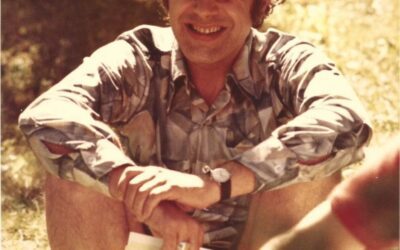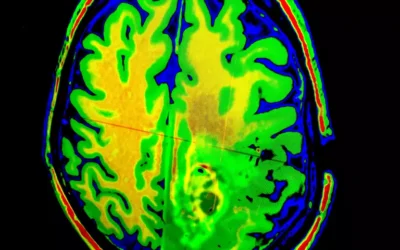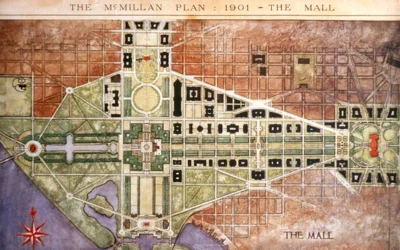Michael Meade: Mythopoetic Wisdom for a Troubled World

Who is Michael Meade?
In a time of global crisis and cultural upheaval, the work of Michael Meade offers a beacon of hope and renewal. As a mythologist, storyteller, and scholar, Meade has spent decades exploring the transformative power of myth, imagination, and the poetic traditions of the world’s cultures. His unique vision weaves together insights from depth psychology, anthropology, and spirituality to reveal the hidden wisdom and regenerative potential within the human soul and the living earth.
Through his books, workshops, and performances, Meade has become a leading voice in the men’s movement and the mythopoetic revival of the late 20th century. His collaborations with visionary thinkers like James Hillman and Robert Bly helped to articulate a new understanding of masculine identity and initiation in an age of ecological and social disruption. At the same time, his work with combat veterans, at-risk youth, and communities in crisis has demonstrated the healing power of myth and story to restore a sense of meaning and purpose in the face of trauma and adversity.
This essay provides an in-depth exploration of Meade’s life, ideas, and enduring influence. It traces his journey from a troubled youth on the streets of New York to his emergence as a leading voice in the fields of mythology and men’s studies. Along the way, it examines his key concepts of the mythic imagination, the genius within, and the “water of life” that flows through all great stories and traditions. By situating Meade’s work within the broader context of depth psychology, eco-spirituality, and the study of myth, the essay reveals the prophetic and transformative power of his vision for a world in need of healing and re-imagination.
The Making of a Mythologist
Michael Meade’s journey to becoming a scholar and storyteller of myth was anything but a straight path. Born in 1944 in New York City to an Irish-American family, Meade grew up in a tough neighborhood where violence, poverty and ethnic tensions were a part of daily life. As a young man, he found himself drawn into the world of street gangs and petty crime, struggling to find a sense of identity and belonging in a fractured urban landscape.
Yet even amidst the chaos and hardship of his early life, Meade felt the stirrings of a deeper calling. He discovered a love of books and ideas, and began to immerse himself in the world of literature, philosophy, and comparative religion. A pivotal moment came when he encountered the works of Carl Jung and Joseph Campbell, two thinkers who would have a profound influence on his own intellectual and spiritual development. In their writings, Meade found a language for the deep-seated yearnings and intuitions that had long animated his inner life.
Inspired by this newfound intellectual passion, Meade left behind the streets of his youth and embarked on a quest for meaning that would take him around the world. He studied at the University of Chicago, where he earned degrees in literature and theology, and later traveled extensively throughout Europe, Asia, and Africa, immersing himself in the wisdom traditions of diverse cultures. Along the way, he began to collect and tell stories – ancient myths and folktales that seemed to speak to the universal human condition and the challenges of the modern world.
As Meade delved deeper into the study of myth, he came to see it not merely as a relic of a primitive past, but as a vital and dynamic force in the present. Myths, he argued, are not just old stories, but living realities that continue to shape our consciousness, our culture, and our connection to the sacred dimensions of life. They offer us a way to navigate the great mysteries of existence – love and death, creation and destruction, the relationship between self and world – and to find our own unique path of transformation and service.
The Water of Life: Meade’s Core Ideas
At the heart of Michael Meade’s work is the concept of the “water of life” – a mythic image that appears in stories and traditions around the world. In folktales like the Grimms’ “The Water of Life” or the Hawaiian legend of the god Kane and his magic gourd, this life-giving water is often hidden away in some remote or forbidden place, guarded by fierce monsters or riddling guardians. The hero’s task is to undertake a perilous quest to secure the elixir and bring it back to a thirsting world.
For Meade, the water of life is a symbol of the deep wells of creativity, healing, and regeneration that lie within the human soul and the living earth. In a time of ecological and social crisis, when the very foundations of life seem to be under threat, the mythic quest for the water of life takes on new urgency and relevance. As Meade writes in his book The Water of Life: Initiation and the Tempering of the Soul:
“When the world grows dry and barren, it means the water of life has gone missing. Something has gotten lost or stolen, and it is up to each of us to find the waters of renewal again. This is a psychological and spiritual task as much as an ecological one. It requires a descent into the depths of the soul, a wrestling with inner demons and outer challenges, and a willingness to face the great riddles of existence.”
Drawing on his deep knowledge of myth and folklore, Meade identifies several key themes and practices that can guide us on this transformative quest. One is the cultivation of what he calls the “mythic imagination” – the capacity to see beyond the literal surface of things and to discern the deeper patterns and possibilities that lie within them. Myth, Meade suggests, is not a flight from reality, but a way of engaging reality more fully, of seeing the world with a poet’s eye and a visionary’s heart.
Another theme is the notion of the “genius within” – the idea that each person is born with a unique gift or calling that they are meant to bring to the world. In traditional cultures, Meade notes, this inner genius was often recognized and cultivated through rites of initiation, in which young people were challenged to discover their true identity and purpose. In the modern world, where such rites have largely disappeared, the task of awakening the genius within falls to each individual, through a process of self-discovery and creative expression.
For Meade, this process is not just a personal quest, but a cultural and planetary one as well. In a time of global crisis, he argues, we need to tap into the collective genius of the human species – the diverse wisdom traditions, cultural practices, and creative innovations that have sustained us through countless challenges and transformations. By weaving together the threads of these different traditions, we can begin to imagine new possibilities for healing and renewal, both for ourselves and for the earth.
The Men’s Movement and the Mythopoetic Revival
One of the key arenas in which Michael Meade has applied his mythic vision is the men’s movement of the late 20th century. Along with figures like Robert Bly, James Hillman, and Robert Moore, Meade was a leading voice in the mythopoetic wing of the movement, which sought to revitalize masculine identity through a creative engagement with myth, poetry, and ritual.
At the heart of the mythopoetic approach was a critique of modern Western culture’s narrow and distorted images of manhood. In place of the stoic, aggressive, and emotionally repressed ideal of the “traditional” male, the mythopoets envisioned a more fluid, soulful, and relational model of masculinity, one that could embrace qualities like vulnerability, empathy, and creative play. They drew on the work of thinkers like Jung and Campbell to map out a new “hero’s journey” for men in a time of cultural upheaval and transformation.
For Meade, this journey was rooted in the ancient myths and stories that have guided men’s initiation and development across cultures. In books like Men and the Water of Life and The Genius Myth, he explored how these tales could be adapted and applied to the challenges of modern life, from the crisis of fatherhood and mentorship to the search for meaningful work and elder wisdom. He also helped to pioneer new forms of men’s gathering and ritual, such as the “men’s council” and the “sweat lodge,” that sought to create safe and sacred spaces for men to share their stories, struggles, and aspirations.
Yet even as he celebrated the power and potential of male mythology, Meade was also clear-eyed about its limitations and shadow sides. He recognized that the mythopoetic approach could sometimes veer into a romanticized or essentialist view of gender, and that it needed to be balanced with a deeper understanding of the ways in which masculinity is shaped by social, economic, and political forces. He also emphasized the importance of men working in solidarity with women and other marginalized groups to create a more just and equitable world for all.
Healing the Wounds: Meade’s Work with Veterans and At-Risk Youth
One of the most powerful applications of Michael Meade’s mythic approach has been his work with combat veterans and at-risk youth. Drawing on his own experiences of trauma and transformation, Meade has developed a unique model of “narrative therapy” that uses myth, poetry, and storytelling to help individuals and communities heal from the wounds of war, violence, and social oppression.
In his work with veterans, Meade has shown how the ancient warrior myths – from the Iliad to the Mahabharata – can provide a language for the unspeakable horrors and moral injuries of combat. By telling their own stories through the lens of these timeless tales, veterans can begin to make sense of their experiences, to grieve their losses, and to find new paths of meaning and service in civilian life. Meade has also helped to create ritualized spaces, such as the “warrior’s return” ceremony, in which veterans can be welcomed back into the community and honored for their sacrifices.
Similarly, in his work with at-risk youth, Meade has used myth and storytelling to help young people find their own voices and visions in a world that often silences and marginalizes them. Through his non-profit organization, Mosaic Multicultural Foundation, he has brought his “mythopoetic youth work” to schools, juvenile detention centers, and community organizations across the country. By inviting young people to tell their own stories and to connect them to the great stories of human culture, Meade helps them to discover their own inner resources and to imagine new possibilities for their lives.
At the heart of Meade’s approach is a deep faith in the power of the imagination to heal and transform both individuals and communities. As he writes in his book The World Behind the World: Living at the Ends of Time:
“The power of imagination is the power to see beyond the given, to envision new possibilities and to bring them into being through our words and actions. It is the power to dream a better world into existence, not as an escape from reality but as a way of engaging it more fully and creatively. In a time of crisis and collapse, when the old stories are crumbling and the new ones have yet to be born, imagination is the most precious resource we have. It is the water of life that can quench our deepest thirst and awaken our deepest powers.”
The Mythic Imagination in a Time of Crisis
As we navigate the challenges and uncertainties of the 21st century, the work of Michael Meade offers a vital resource for personal and cultural renewal. His vision of the mythic imagination, the genius within, and the healing power of story speaks to the deep longings and potentials of the human spirit, even in the face of seemingly insurmountable odds.
At a time when the old myths are crumbling and the new ones have yet to fully emerge, Meade invites us to become active participants in the shaping of our own stories and the larger story of our world. He challenges us to cultivate a poetic and imaginative engagement with life, to find the hidden wells of creativity and resilience within ourselves and our communities, and to work together to create a more just, sustainable, and beautiful future for all.
In the end, perhaps the greatest gift of Meade’s work is the reminder that we are all part of a larger story, a mythic drama that has been unfolding since the beginning of time. By reconnecting with this story, and by claiming our own unique role within it, we can begin to heal the wounds of the past and to shape a new world into being. As Meade writes in The Genius Myth:
“We are the ancestors of a future that is yet to be born, the seeds of a great tree that will one day shade and shelter generations to come. The myths and stories we tell today, the dreams we dare to dream and the lives we choose to live, will be the soil in which that future grows. May we tend it well, with all the love, courage, and imagination we can muster.”
In the telling of our own stories, and in the weaving of them together into a larger tapestry of meaning, we participate in the ongoing creation of the world. This is the essence of the mythic imagination, and it is the great work to which Michael Meade has devoted his life and legacy. May we be inspired by his example, and may we each find our own way to add our thread to the great story that is still being told.
Read More Depth Psychology Articles:
Taproot Therapy Collective Podcast
Jungian Topics
How Psychotherapy Lost its Way
Therapy, Mysticism and Spirituality?
The Symbolism of the Bollingen Stone
What Can the Origins of Religion Teach us about Psychology
The Major Influences from Philosophy and Religions on Carl Jung
How to Understand Carl Jung
How to Use Jungian Psychology for Screenwriting and Writing Fiction
The Symbolism of Color in Dreams
How the Shadow Shows up in Dreams
Using Jung to Combat Addiction
Jungian Exercises from Greek Myth
Jungian Shadow Work Meditation
Free Shadow Work Group Exercise
Post Post-Moderninsm and Post Secular Sacred
The Origins and History of Consciousness
Jung’s Empirical Phenomenological Method
The Future of Jungian Thought
Jungian Analysts
Anthropology

























0 Comments